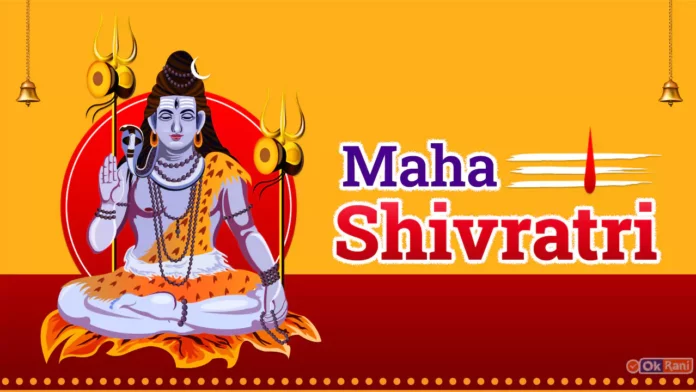Maha Shivratri is a Hindu festival celebrated once a year in late winter. It marks the night when Lord Shiva is said to perform his divine dance known as the ‘tandav.’ This festival is celebrated with great enthusiasm in India, Nepal, and the West Indies, among Hindu communities.
Shivaratri is observed every month in the Hindu calendar, but Maha Shivratri holds special significance. It signifies the transition from winter to summer. The dates and rituals associated with Maha Shivratri may vary across different regions and communities.
The term ‘Maha Shivratri’ translates to ‘the great night of Shiva.’ It is believed that on this night, devotees can attain blessings and spiritual growth by observing fasting, performing rituals, and chanting prayers dedicated to Lord Shiva.
Table of Contents
Maha Shivaratri 2024
The festival is marked by elaborate puja (worship) ceremonies, where devotees offer prayers, fruits, flowers, and milk to Lord Shiva. Many also observe a strict fast throughout the day and night, seeking the blessings of Shiva for health, prosperity, and happiness.
Throughout the night, devotees gather in temples to participate in bhajans (devotional songs), meditation, and recitation of Shiva mantras. The atmosphere is filled with devotion and spiritual fervor as people come together to celebrate the greatness of Lord Shiva.
Maha Shivratri holds immense significance in Hindu mythology and is celebrated with reverence and joy by millions of devotees around the world. It serves as a reminder of the power of faith and the importance of spiritual practice in one’s life.
Maha Shivratri 2024 Date
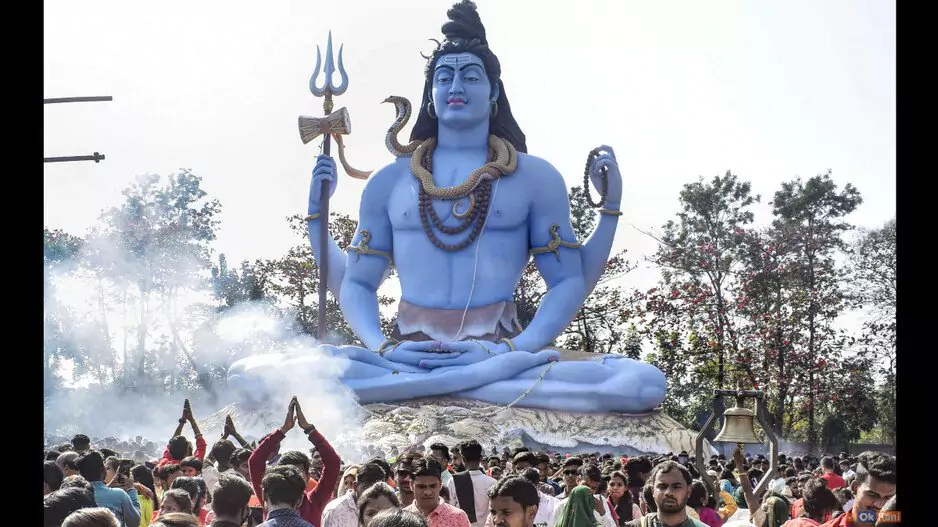
This year, Maha Shivratri, the special festival, will be celebrated on March 8th. It is a significant date for Hindus who observe this festival to honor Lord Shiva. On March 8th, devotees across India and other parts of the world will come together to blessings of Lord Shiva.
During Maha Shivratri, people visit temples dedicated to Lord Shiva, offering prayers and performing special rituals. Some devotees also fast on this day as a form of devotion and penance.
The atmosphere on March 8th will be filled with spiritual fervor and excitement as people gather to celebrate the greatness of Lord Shiva and seek his divine blessings for health, prosperity, and happiness.
Maha Shivratri 2024 Puja Timings
Maha Shivaratri falls on March 8, 2024, which is a Friday according to the Hindu calendar. The Chaturdashi Tithi, which is the fourteenth lunar day, begins at 21:57 on March 8, 2024, and ends at 18:17 on March 9, 2024.
| Maha Shivaratri Date | March 8, 2024 |
| Maha Shivaratri Day | Friday |
| Chaturdashi Tithi Begins | 21:57 on Mar 08, 2024 |
| Chaturdashi Tithi Ends | 18:17 on Mar 09, 2024 |
| Nishita Kaal Puja Time | 00:07 to 00:56, Mar 09 |
| Ratri First Prahar Puja Time | 18:25 to 21:28 |
| Ratri Second Prahar Puja Time | 21:28 to 00:31, Mar 09 |
| Ratri Third Prahar Puja Time | 00:31 to 03:34, Mar 09 |
| Ratri Fourth Prahar Puja Time | 03:34 to 06:37, Mar 09 |
| Shivaratri Parana Time | 06:37 to 15:29 |
During this auspicious day, devotees observe various rituals and prayers to honor Lord Shiva. The Nishita Kaal Puja, considered highly auspicious, takes place from 00:07 to 00:56 on March 9, 2024.
The puja timings are divided into four parts known as “Prahar.” The Ratri First Prahar Puja time is from 18:25 to 21:28, followed by the Ratri Second Prahar Puja time from 21:28 to 00:31 on March 9, 2024. The Ratri Third Prahar Puja time is from 00:31 to 03:34, and the Ratri Fourth Prahar Puja time is from 03:34 to 06:37 on March 9, 2024.
Additionally, the Shivaratri Parana, which marks the conclusion of fasting, is observed from 06:37 to 15:29 on March 9, 2024. During this time, devotees break their fast and offer prayers seeking blessings from Lord Shiva. Maha Shivaratri is a significant festival in Hinduism, and these timings are crucial for devotees to observe the rituals and ceremonies associated with the occasion.
Maha Shivaratri Story
Maha Shivaratri has many stories behind its origin. One tale from the Puranas talks about the time when poison emerged during the churning of the ocean. This poison was so potent that it threatened to destroy the world. To protect everyone, Lord Shiva drank the poison and held it in his throat, turning it blue. This act saved the world, and Maha Shivratri is celebrated to commemorate this event.
Another story from the Shiv Purana tells of a dispute between Brahma and Vishnu over their superiority. To settle their argument, Lord Shiva appeared as a massive fiery column that seemed endless. Brahma and Vishnu tried to find their limits, with Brahma taking the form of a swan and Vishnu transforming into a boar. However, they couldn’t find the ends, and Brahma even lied about finding the top. As a result, Shiva cursed Brahma for his dishonesty. This event is also associated with Maha Shivratri.
In another popular legend, Goddess Parvati observed a fast on Maha Shivratri for the well-being of Lord Shiva after their marriage. This tradition of fasting for the husband’s longevity is still followed by many women today.
Maha Shivratri is celebrated in various states of India, including Uttarakhand, Rajasthan, Uttar Pradesh, Madhya Pradesh, Punjab, Himachal Pradesh, and Bihar. It marks both the anniversary of Lord Shiva and Goddess Parvati’s union and the occasion when Shiva saved the world from destruction. Additionally, it commemorates the incident where Brahma and Vishnu learned the lesson of humility.
Maha Shivaratri Significance
Followers and devotees of Lord Shiva observe special rituals and fasts in many temples dedicated to Shiva worldwide. They offer milk to the Shivalinga, a symbol of Lord Shiva, and pray for spiritual liberation, known as moksha. Many devotees spend the entire night praying and chanting mantras in praise of Lord Shiva.
Women also participate in the festivities, praying to be blessed with a good husband and a happy married life. Additionally, various temples organize fairs and cultural programs to celebrate the occasion.
It’s believed that those who perform puja, observe fasts, and offer prayers to Lord Shiva are bestowed with good luck and blessings. These rituals hold significant spiritual meaning for devotees seeking divine grace and guidance in their lives.
Maha Shivaratri Festival – Why Is Mahashivratri Celebrated?
The origin of Maha Shivratri is mentioned in several ancient texts like Skanda, Linga, and Padma Puranas. It is celebrated as the wedding anniversary of Goddess Parvati and Lord Shiva. Another belief, particularly in Shaivism, is that Shiva performs a divine dance symbolizing creation, preservation, and destruction on this night.
According to the Isha SadhGuru Organisation, Maha Shivratri holds significance for spiritual seekers, families, and ambitious individuals. Families often observe it as Shiva’s wedding anniversary, while those with worldly ambitions see it as the day Shiva overcame his adversaries. For ascetics, it signifies the day Shiva attained stillness, becoming like Mount Kailash.
In the yogic tradition, Shiva is revered not just as a deity but as the Adi Guru, the first Guru from whom Yoga originated. After eons of meditation, he attained complete stillness on Mahashivratri. It is seen as the night of ultimate tranquility for ascetics and seekers alike.
Legend has it that during the churning of the ocean (Samudra Manthana), poison emerged, threatening all life. To protect gods and humanity, Shiva consumed the poison and held it in his throat. This act of self-sacrifice is remembered on Maha Shivratri, symbolizing the preservation of life. Since then, the festival has been celebrated to honor Shiva’s benevolence and courage.
Maha Shivaratri Drawing
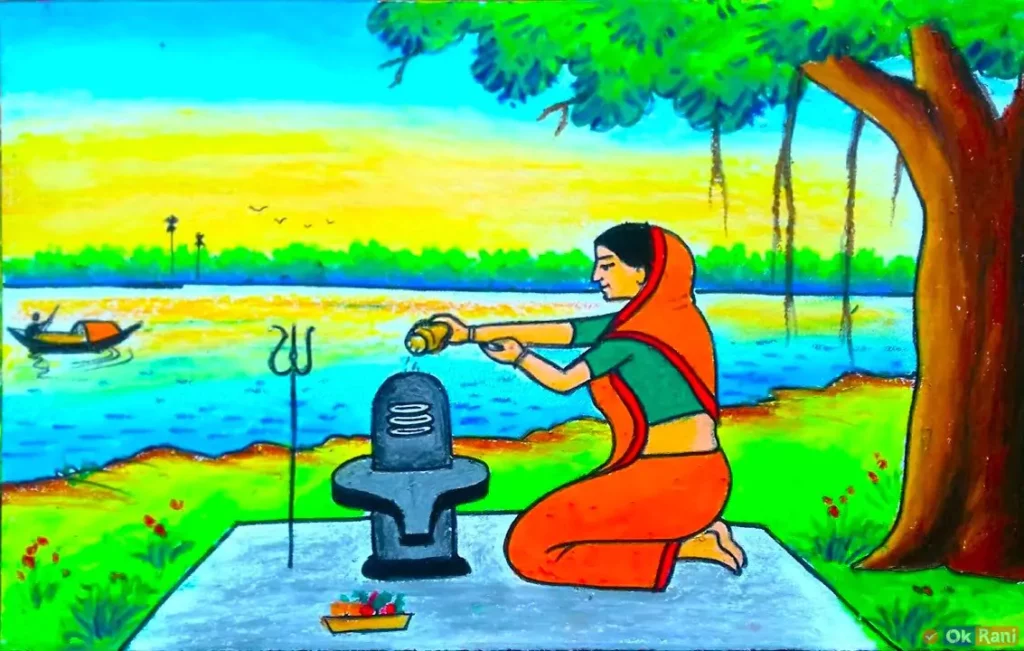
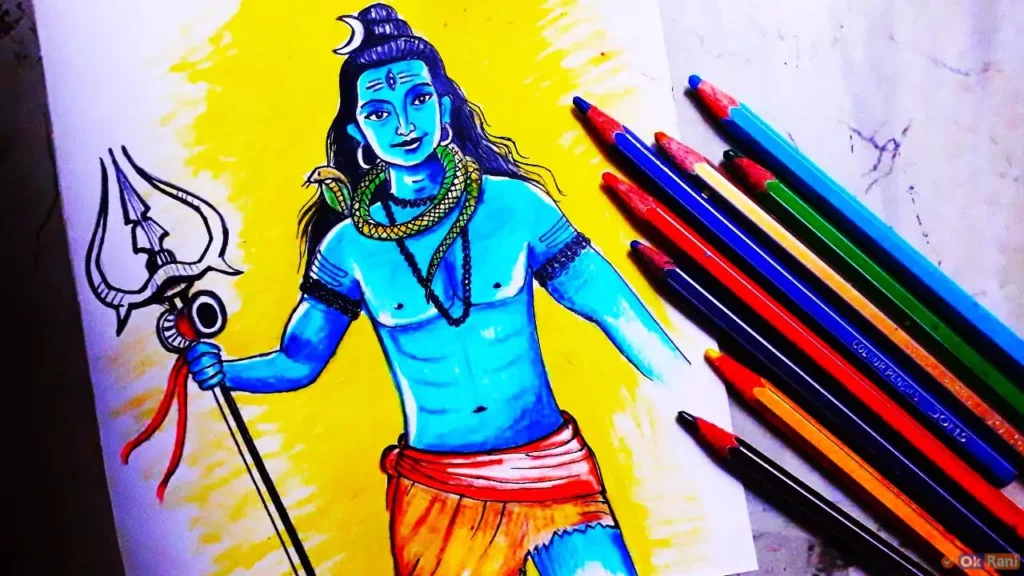
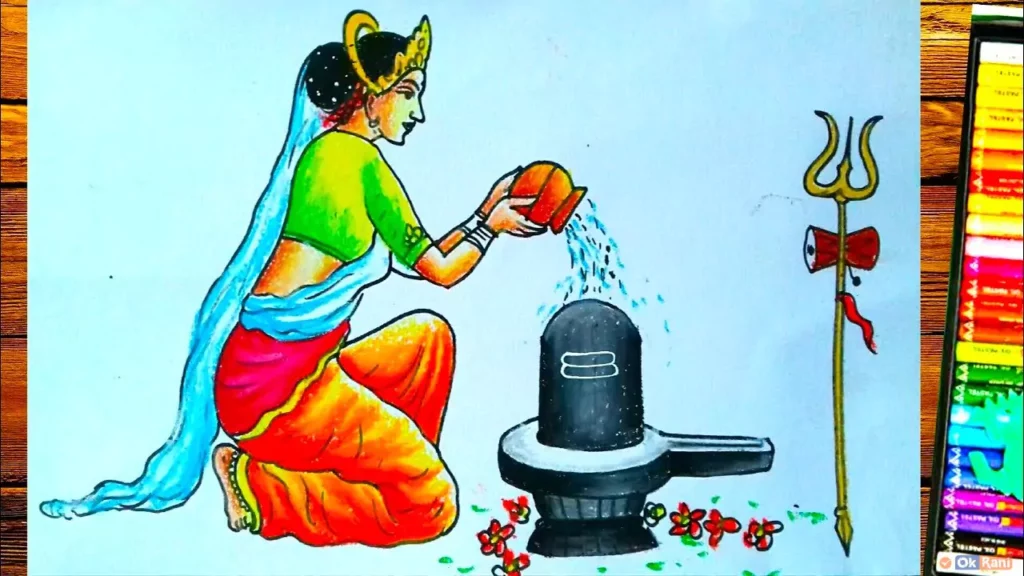
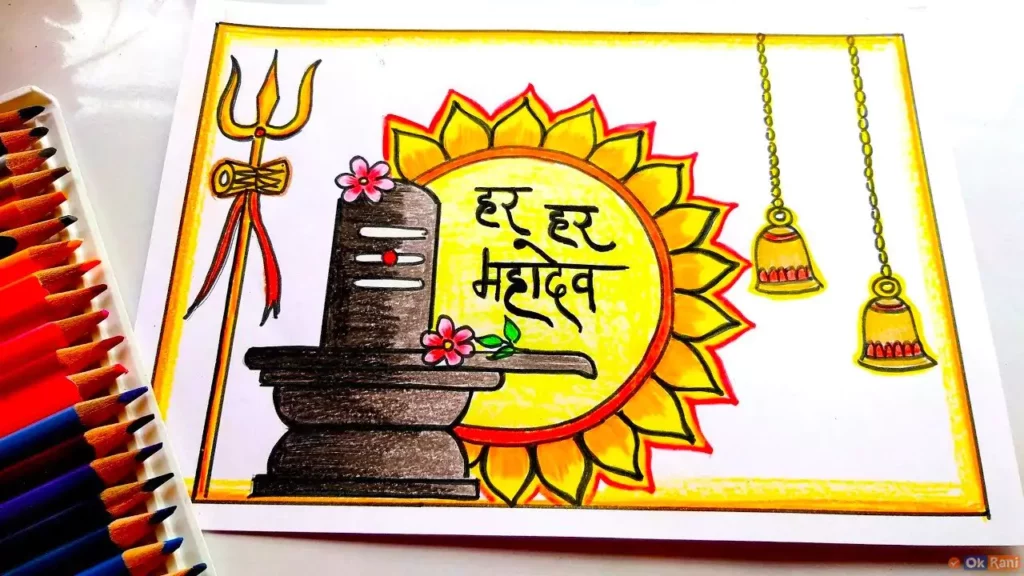
Also Read: Pradosh Vrat 2024: Date, Story, Rituals, and Significance
| FAQ – Maha Shivaratri |
1. What are the rules of Shivaratri?
To observe the fast on Maha Shivratri, it is recommended to wake up early in the morning around Brahma Muhurta or at sunrise. Take a bath and wear clean white clothes for the fast. Those fasting on Maha Shivratri should chant “Om Namah Shivay” multiple times throughout the day.
2. Why is it called Maha Shivaratri?
According to one legend, Maha Shivratri celebrates the marriage of Lord Shiva and Devi Parvati. It’s said that they got married on this special day. Their union holds deep significance: Shiva represents mindfulness, while Parvati represents nature.
3. Why we don’t sleep in Shivaratri?
On Shivratri, think about the Lord, visit temples, perform Shiv puja at home, and engage in spiritual activities. If you’re fasting all day, try not to sleep during Shivratri night. Stay awake and sing praises of the Lord, chanting his mantras throughout the night.
4. Who started Maha Shivaratri?
The festival of Maha-Shivaratri has its origins in ancient Indian mythology. According to legends, it commemorates the time when Shiva performed the Tandava-Nritya, which is also called the dance of creation, preservation, and destruction.
5. Can we cut hair on Shivaratri?
During this month, devotees worship Lord Shiva and may fast for him. However, there are certain things they avoid doing. One of them is cutting their hair during this time.

